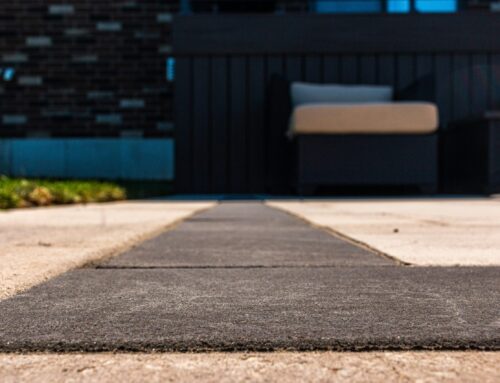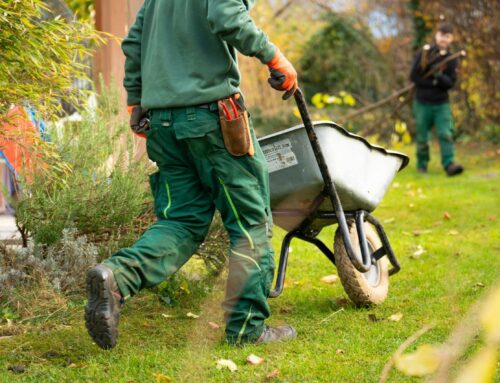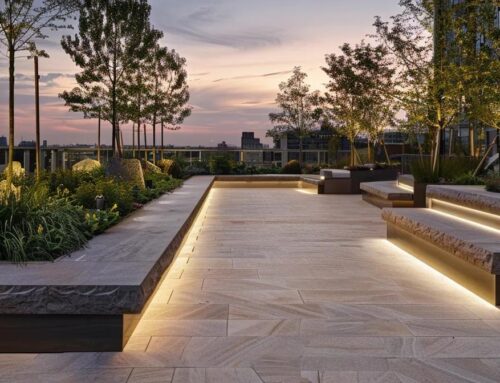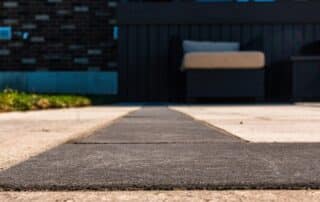Hardscaping is more than the installation of patios or walkways—it is an integrated approach to outdoor design that elevates a property’s value, functionality, and aesthetic appeal. Professionally designed hardscape features transform your outdoor space into an inviting oasis while enhancing property value and longevity. This article explains how the integration of stone, brick, and other durable materials can improve drainage, curb appeal, and sustainability. It answers common questions about the long-term return on investment and compares hardscaping to traditional landscaping, using technical insight and real-life examples to help you embrace a holistic outdoor living design that supports both lifestyle and home value.
In the following sections, I break down key facets of professional hardscaping: its impact on real estate appraisal, enhancement of curb appeal and functionality, lifestyle improvements, and practical advice on material selection and maintenance. Whether you are drawn to fire pits for entertainment, elegant retaining walls for erosion prevention, or energy-efficient lighting for safety and ambiance, this article provides detailed answers to frequently asked questions by property owners. Let us now explore how hardscaping can turn a simple backyard into a lasting investment.
How Does Professional Hardscaping Increase Property Value?
Professional hardscaping increases property value by introducing enduring, visually appealing, and functional outdoor elements. Features such as retaining walls, patios, walkways, and fire pits significantly raise appraisal values by integrating harmoniously with the natural landscape, balancing beauty with performance.
What Impact Does Hardscaping Have on Real Estate Appraisal?
Properties with dedicated hardscape designs are often appraised 10–15% higher compared to those with standard landscaping. Quality installations like decorative brick pathways and customized stone patios are seen as unique selling points because appraisers value durable, low-maintenance materials and long-lasting features such as retaining walls and outdoor kitchens.
Which Hardscape Features Add the Most Value?
Key features that enhance property value include patios, outdoor kitchens, and fire pits. These elements expand the home’s usable area and create inviting spaces for social interaction. Additionally, custom walkways with proper lighting and drainage improve visual appeal and reduce future repair risks. In one case study, a property that integrated an attractive stone patio achieved a 12% increase in valuation compared to similar homes without these enhancements.
Are There Statistics Supporting Hardscaping ROI?
Studies indicate homeowners can expect a 70–80% ROI on high-quality hardscaping installations, particularly in regions where improved drainage is critical. Properties with professionally installed patios and walkways have even realized a 15% higher sale price. The combination of improved aesthetics, longevity, and functionality supports the view that professional hardscaping is a wise long-term investment.
How Can Professional Hardscaping Enhance Your Property’s Curb Appeal?
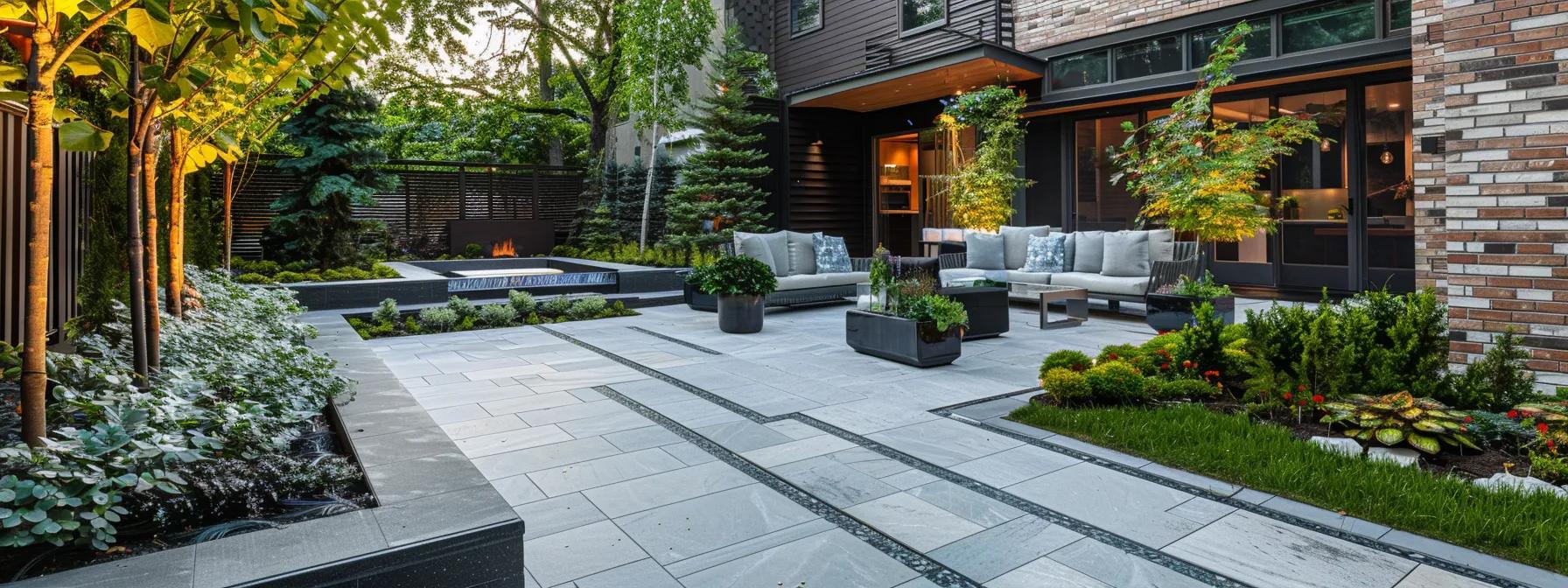
Professional hardscaping transforms an ordinary yard into a visually inviting and organized outdoor space. A cohesive design that incorporates natural materials, geometric patterns, and complementary plantings creates impressive first impressions and unites the home with its surroundings.
What Design Elements Create Stunning First Impressions?
Structured pathways, well-defined borders, and eye-catching focal points such as water features or sculpted stone are key. Emphasizing symmetry and balance—like a stone walkway winding through a curated garden with retaining walls in the background—creates an immediate sense of order. Decorative lighting and coordinated colors with the home’s exterior further emphasize the design’s sophistication.
How Do Patios, Walkways, and Fire Pits Improve Outdoor Aesthetics?
Patios serve as hubs for outdoor living and social gatherings, while walkways guide visitors between different zones. Fire pits add warmth and serve as engaging focal points. Together, these elements create distinct zones that personally customize the space and enhance its overall aesthetic appeal, making the property memorable at first glance.
Can Hardscaping Complement Landscaping for Maximum Effect?
Absolutely. When paired with softscape elements like flowers, shrubs, and mature trees, hardscaping creates a balanced, environmentally responsive design. Retaining walls and garden borders channel water efficiently, supporting plant health and reducing erosion. The synergy between hardscape and landscape elements produces a sustainable, appealing design that also minimizes maintenance efforts.
In What Ways Does Hardscaping Improve Outdoor Functionality?
Hardscaping defines dedicated areas for various activities, maximizing the usable outdoor space. By addressing issues like poor drainage, soil erosion, and inefficient layouts, hardscape installations ensure that outdoor areas remain safe, accessible, and comfortable all year round.
How Do Hardscape Designs Expand Usable Outdoor Living Space?
When well executed, hardscape designs convert underutilized or awkward areas into vibrant outdoor rooms. Patios, decks, and outdoor kitchens extend indoor living spaces into the open air, providing additional seating, dining, and recreational zones. Integrated lighting, seating walls, and built-in planters further boost function and ambiance, adapting the space easily to different occasions.
What Are the Benefits of Retaining Walls and Driveways?
Retaining walls manage slopes, ensure soil stability, and enhance safety while serving as visually appealing separators between zones. Professionally designed driveways improve accessibility and add an element of sophistication to a property’s entrance. Durable materials such as pavers, natural stone, or textured concrete resist weather and wear, thereby reducing ongoing maintenance costs.
How Does Professional Planning Optimize Space and Flow?
Expert landscape architects analyze site dimensions and topography to create a layout that optimizes movement and highlights focal zones. Seamless transitions—from driveways to patios, through interconnected pathways—offer intuitive navigation. A well-planned design not only maximizes aesthetic value but also ensures functional capacity for everyday use.
How Does Professional Hardscaping Enhance Lifestyle and Outdoor Living?

Professional hardscaping creates outdoor spaces that cater both to relaxation and entertainment, transforming backyards into extensions of the home. Thoughtfully designed outdoor rooms encourage family gatherings, social events, and quiet retreats, redefining daily home life.
What Outdoor Features Create a Relaxing and Entertaining Environment?
Outdoor kitchens, fire pits, and water features establish a calming ambiance while providing practical areas for hosting. A serene patio with ambient lighting and comfortable seating transforms evenings into memorable experiences. Features like built-in fire pits naturally promote conversation and warmth, while pergolas and gazebos offer shaded retreats suitable for daytime or evening activities.
How Does Hardscaping Support Year-Round Outdoor Activities?
By using specialized materials and designs, professional hardscaping supports outdoor use regardless of season. Improved drainage, non-slip surfaces, and well-planned lighting ensure safety during wet weather and darker evenings. Meanwhile, durable weather-resistant materials such as natural stone, brick, and reinforced pavers maintain their charm even in extreme conditions, allowing you to enjoy outdoor activities throughout the year.
What Client Testimonials Highlight Lifestyle Improvements?
Clients praise professional hardscaping for transforming their outdoor lifestyles. One homeowner remarked that a custom stone patio and integrated fire pit “instantly elevated our outdoor living experience, turning a simple backyard into an inviting extension of our home.” Others have highlighted how well-integrated retaining walls and lighting not only increased property value but also created an ideal space for family gatherings all year round.
What Materials Are Best for Professional Hardscaping Projects?
Choosing the right materials is critical for durability, function, and aesthetics. Options like concrete, brick, and natural stone impact maintenance, longevity, and cost. High-quality, sustainable materials ensure that hardscape elements remain attractive and withstand weather challenges over time.
What Are the Pros and Cons of Concrete, Brick, and Natural Stone?
Concrete is versatile and cost-effective but can appear plain compared to natural materials. Brick offers classic charm and excellent traction though it may require extra maintenance over time. Natural stone provides unique beauty but tends to be costlier and may need specialized installation. The choice depends on environmental conditions and the desired visual impact.
How Do Material Choices Affect Durability and Maintenance?
Durability is essential to reduce long-term costs. High-density pavers and engineered bricks resist freeze-thaw cycles and heavy traffic, minimizing wear. Natural stone, while appealing, often needs periodic sealing, whereas concrete can be improved with additives to reduce porosity. Local climate, usage patterns, and maintenance capabilities are key factors in selecting the optimal material.
Are Sustainable and Eco-Friendly Materials Available?
Sustainable options are important in modern hardscape design. Permeable pavers manage stormwater and reduce flooding, while recycled concrete and reclaimed brick offer durability and a lower environmental impact. Using locally sourced materials further supports sustainability by reducing transportation emissions and supporting regional economies.
Why Choose Professional Hardscaping Services Over DIY?
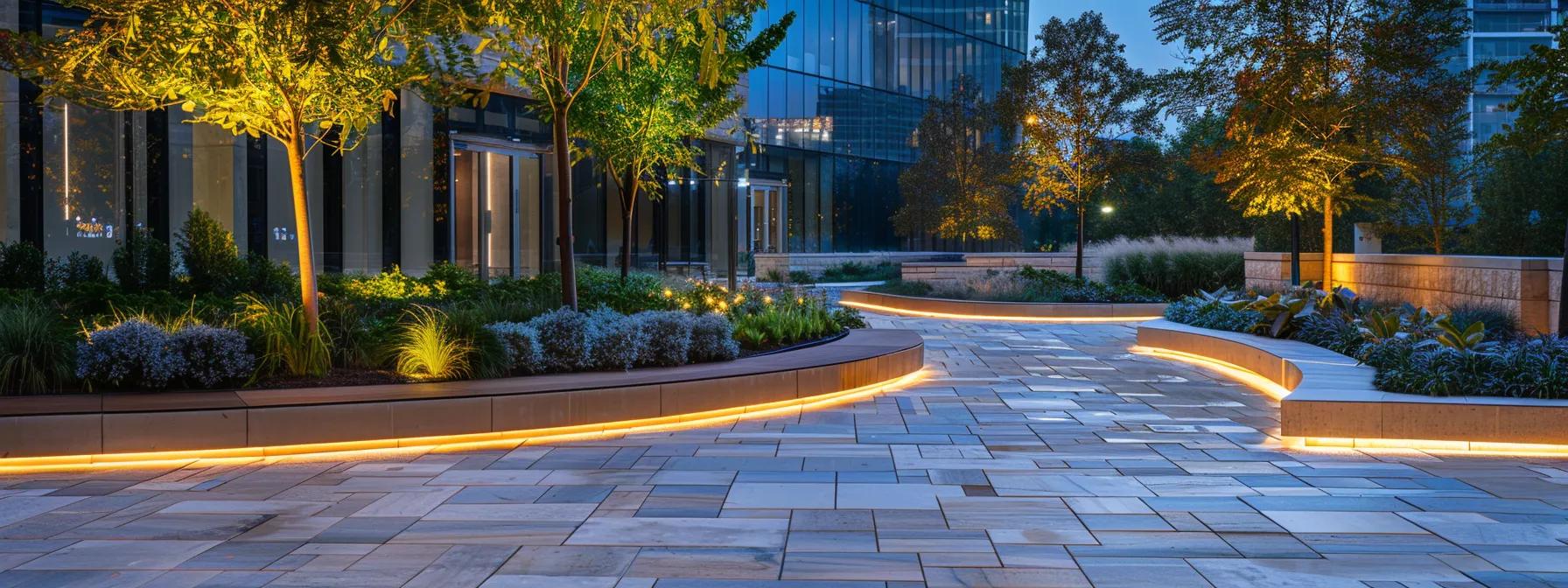
Professional hardscaping services provide expertise across design, material selection, project management, and long-term maintenance planning—benefits that DIY projects rarely match. Investing in professional services ensures compliance with regional regulations and an outcome that meets both aesthetic and functional expectations.
What Expertise Does a Professional Hardscaper Provide?
Professional hardscapers bring specialized skills in design, engineering, and construction management. They conduct accurate site analyses and use modern techniques to optimize space, ensuring longevity and addressing issues like drainage proactively. Their experience allows them to integrate current design trends with proven construction practices.
How Does Quality Craftsmanship Impact Project Longevity?
Quality craftsmanship is key to creating hardscape features that resist environmental wear and minimize maintenance. Precise measurements, proper foundation preparation, and high-quality materials secure long-term durability. The resulting installations not only add aesthetic appeal but also contribute to higher appraisal values and lasting performance.
What Are the Benefits of Comprehensive Service From Consultation to Maintenance?
A comprehensive service covers every phase—from initial consultation and design through installation and ongoing maintenance. Professionals manage permits and regulatory requirements, offer customized design solutions, and schedule post-installation upkeep. This all-inclusive approach minimizes unexpected costs and ensures the investment continues to add value over time.
How Should You Maintain and Care for Your Hardscape Features?
Regular maintenance is crucial to preserving both the function and appearance of your hardscape features. Periodic cleaning, inspections, and timely repairs protect against weathering, staining, and structural issues, significantly extending the lifespan of patios, driveways, retaining walls, and more.
What Are the Best Cleaning and Maintenance Practices?
Use gentle, effective cleaning solutions and low-pressure power washing to remove dirt and mildew without damaging surfaces. Routine inspections help identify small issues before they escalate, while sealing concrete and reapplying protective coatings on brick or natural stone maintain both aesthetic appeal and structural integrity. Scheduling maintenance before winter and after heavy rains is key to ensuring safe, non-slip surfaces and effective drainage.
How Can You Repair and Restore Hardscape Elements?
Timely repairs prevent minor issues from becoming costly. Small cracks in concrete can be filled with appropriate compounds, and chipped bricks replaced to preserve design consistency. For more complex repairs, such as reinforcing a failing retaining wall, it is advisable to engage professionals. Keeping a record of routine maintenance helps in planning future restoration projects.
What Are Winterization Tips for Hardscaping?
Before freezing temperatures set in, clear debris from surfaces, secure built-in water features, and apply a winter-grade sealant to exposed areas. Ensuring drainage systems are unobstructed prevents water accumulation and damage from freeze-thaw cycles. Regular winter checks and prompt repairs after storms help preserve the overall integrity and appearance of your hardscape.
Frequently Asked Questions
Q: How often should professional hardscaping be maintained?
A: Hardscaping should be inspected and cleaned at least seasonally. Regular maintenance—including power washing and routine sealing—ensures longevity and aesthetic consistency, with many professionals recommending biannual check-ups.
Q: Can hardscaping improve drainage problems?
A: Yes, by incorporating retaining walls, permeable pavers, and custom-designed drainage systems, professional hardscaping effectively channels runoff away from foundations, reducing the risk of water damage.
Q: How much can hardscaping add to my property’s value?
A: High-quality hardscaping can add 10–15% to your property’s value through improved curb appeal, expanded outdoor living spaces, and reduced long-term maintenance costs.
Q: Are eco-friendly hardscaping options available?
A: Absolutely. Eco-friendly options such as permeable pavers, reclaimed bricks, and locally sourced natural stone offer durability and reduce environmental impact while aligning with sustainable design practices.
Q: What is the average ROI for a professional hardscaping project?
A: On average, homeowners can expect an ROI of around 70–80% from professional hardscaping projects, thanks to enhanced patio, walkway, and outdoor kitchen installations that add substantial long-term value.
Final Thoughts
Professional hardscaping not only elevates your property’s aesthetic appeal but also delivers measurable improvements in functionality and market value. Every element—from delicate retaining walls to robust driveways—is engineered for efficiency and enduring beauty. By investing in expert design and quality materials, homeowners secure both immediate visual rewards and long-term financial benefits. Ultimately, well-conceived hardscape designs create a harmonious blend of form and function that is sure to impress buyers and enrich everyday living.

